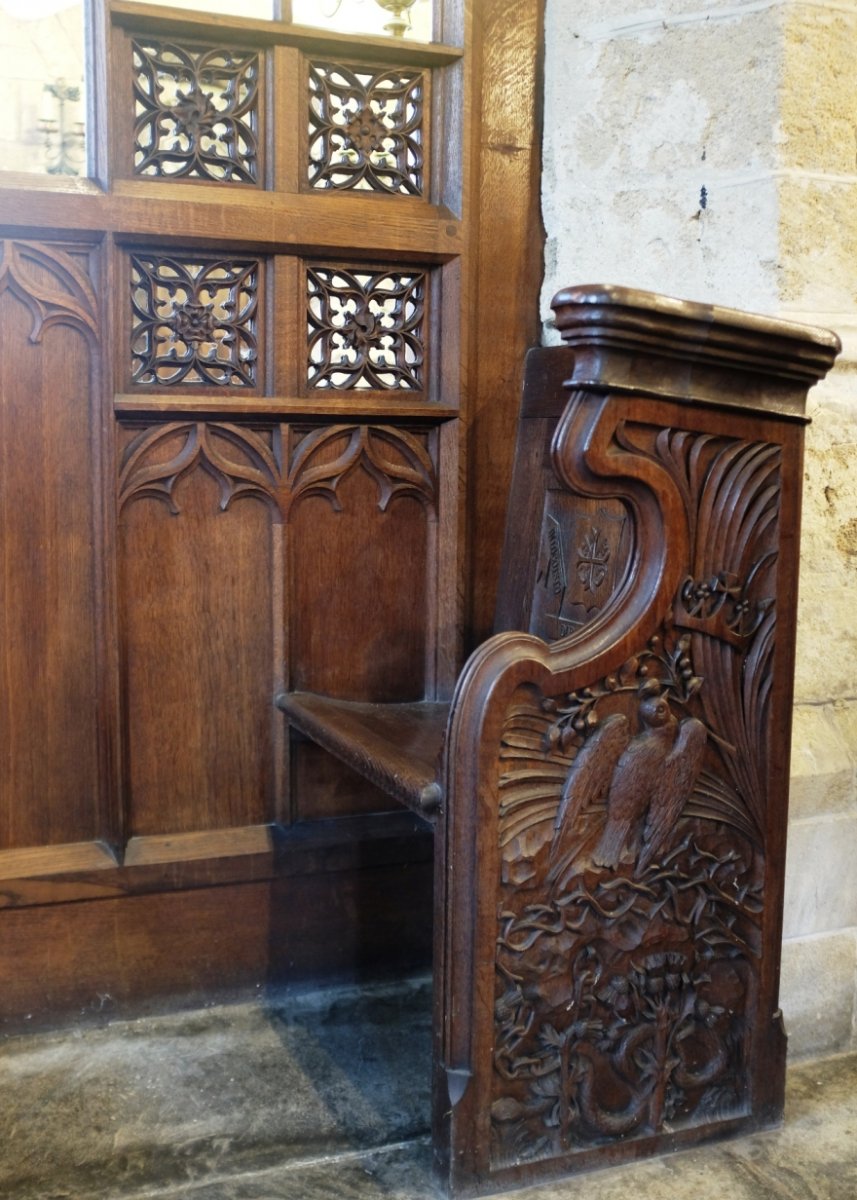Author Helen Wilson introduces a family of Victorian craft pioneers.
Mary, Ethel and Violet Pinwill were three extraordinary women who worked as professional woodcarvers in Ermington and then Plymouth, Devon, from about 1889. Their parents, the Revd Edmund and Elizabeth Pinwill, encouraged their daughters to learn woodcarving from craftsmen who came to Ermington to restore the church there in 1884. The sisters then set up their own company, Rashleigh, Pinwill & Co., Ecclesiastical Carvers. While it was not unusual for women to learn woodcarving in the late Victorian period, it was quite exceptional for them to become professionals.
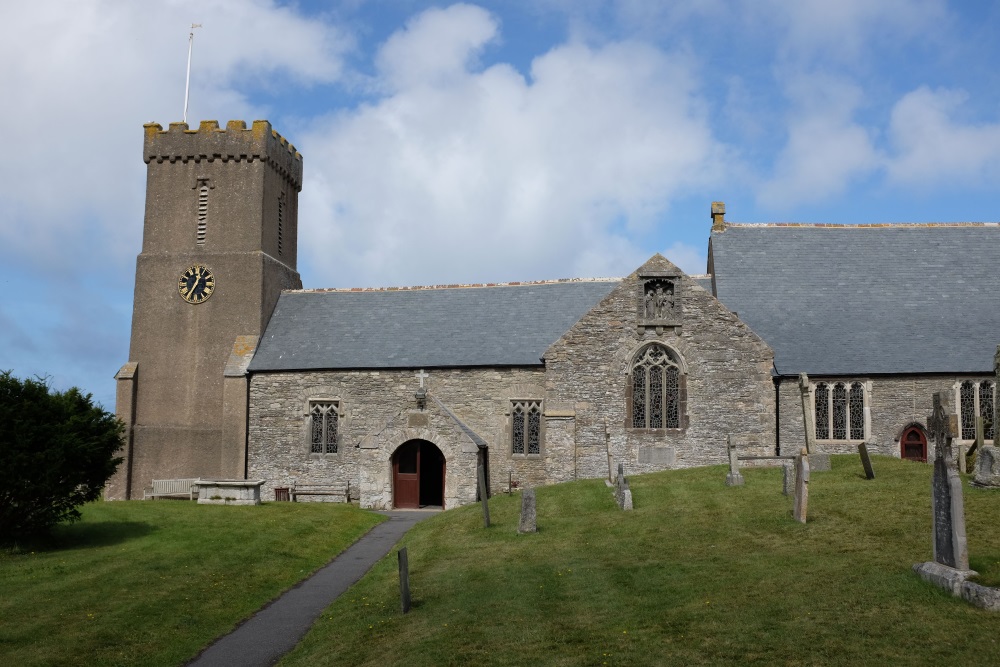
Figure 1
The establishment and success of the firm was due in no small part to the patronage of the architect Edmund H. Sedding. He was the nephew of the Arts & Crafts architect John Dando Sedding and had come to know the Pinwills well during the restoration of Ermington church. The Pinwills opened a workshop in Plymouth at the same address as Sedding’s practice and enjoyed a close working relationship with him.
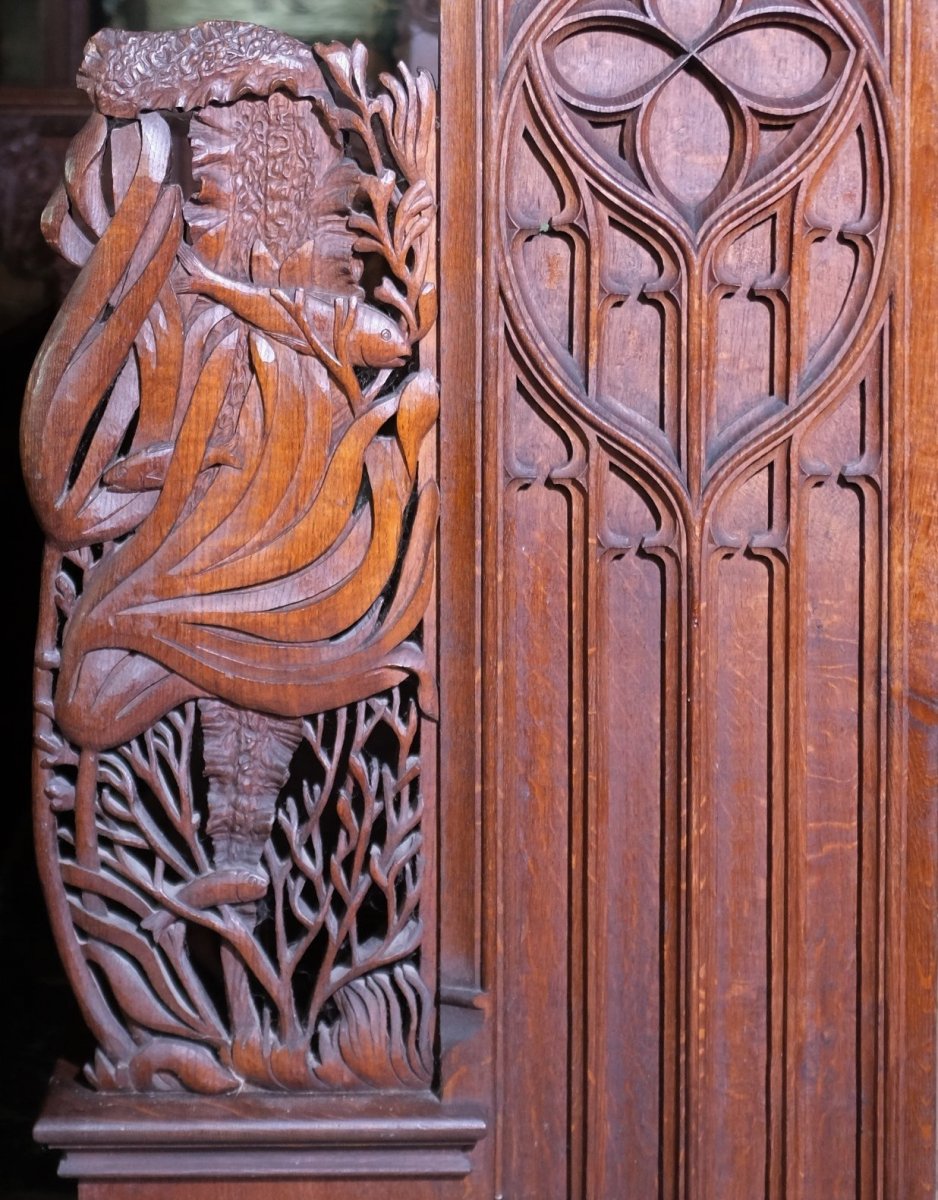
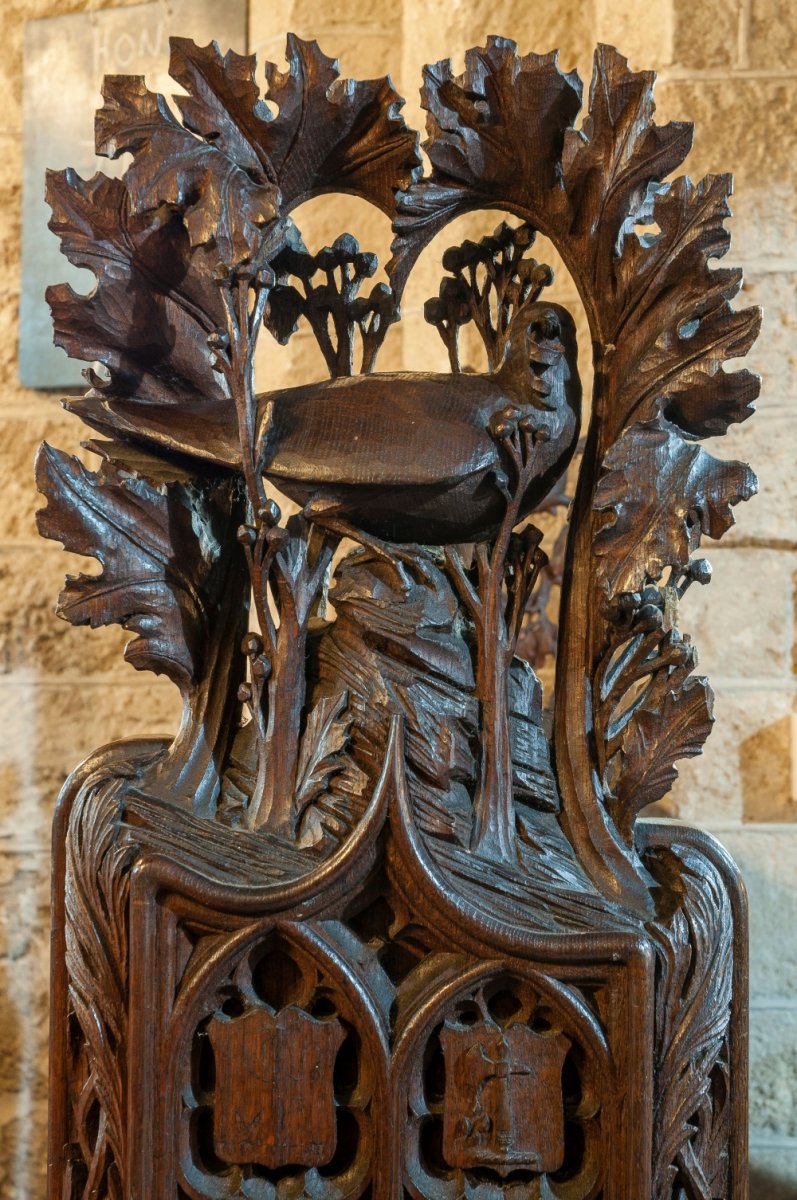
Figures 2 and 3
The success of the Pinwill-Sedding collaboration was demonstrated by the complete transformation of the medieval collegiate church of St Carantoc, Crantock, Cornwall (Fig. 1), between 1899 and 1907. The instigator was Fr George Metford Parsons, who arrived at Crantock in 1894 to find the church almost in ruin. Fr George, Sedding and the Pinwills together achieved one of the most ambitious Anglo-Catholic restorations in late Victorian Cornwall, and in the process created its ‘entirely convincing medieval character’.
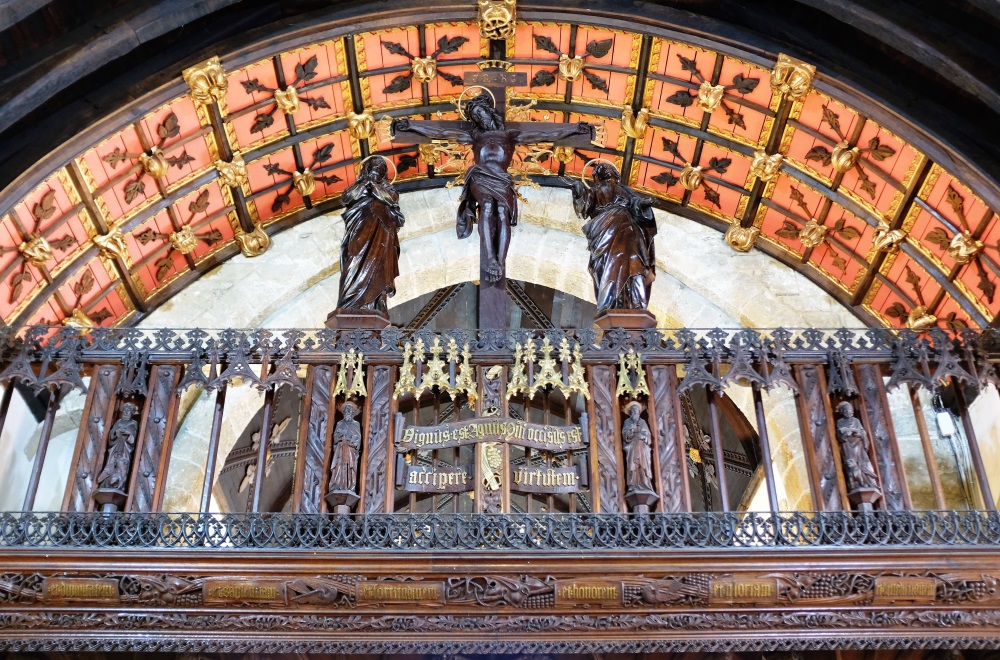
Figure 4
In a reference to the church’s collegiate past, the choir stalls were fitted with misericords, while the bench ends and poppy heads stand out for their wealth of naturalistic designs (Figs 2 & 3). The diversity is breath-taking and the attention to detail intense. A magnificent screen stretches the width of nave and transepts. Across the carved cornice runs a gilded banner with the words of the canticle Dignus est Angus (Worthy is the Lamb). Above and behind deep cresting sits a gilded rood loft featuring fourteen statues of apostles and evangelists. Above the loft again is the rood, beautifully framed by a gilded and coloured ceilure (Fig. 4).
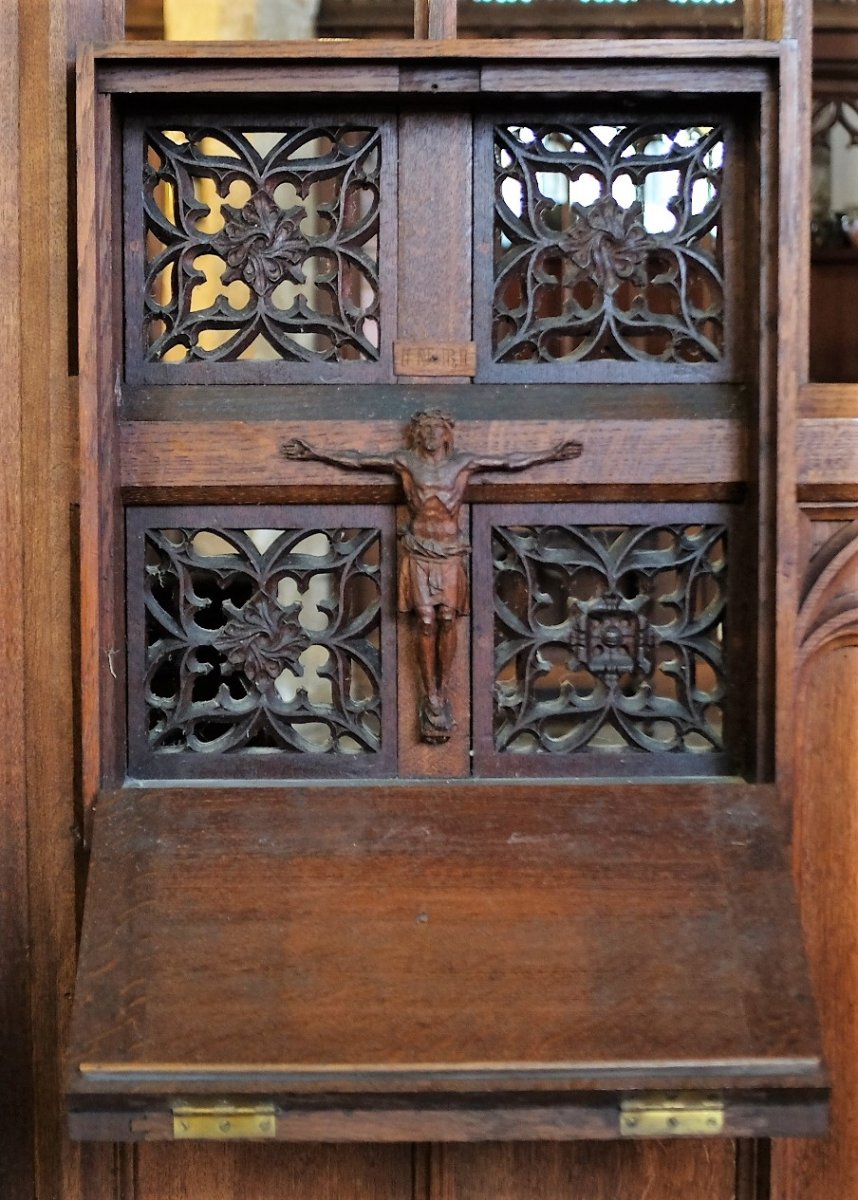
Figures 5 and 6
Probably the most significant feature of the Lady Chapel is incorporated into the parclose screen. A pair of hinged panels fold down to reveal a grill (Fig. 5), while on the opposite side a seat is provided for a priest (Fig. 6). While this confessional could be seen to be in keeping with the collegiate status of the medieval church, it is also symbolic of the depth of Anglo-Catholic conviction at Crantock. Sedding, in a warm, yet modest, conclusion said, ‘The old collegiate church … is thereby redeemed and put right again in the sight of those who reverence God’s sanctuary’. Crantock, above all other commissions, marks a high point in the Pinwill-Sedding relationship, one in which the synthesis between design and execution was truly seamless.
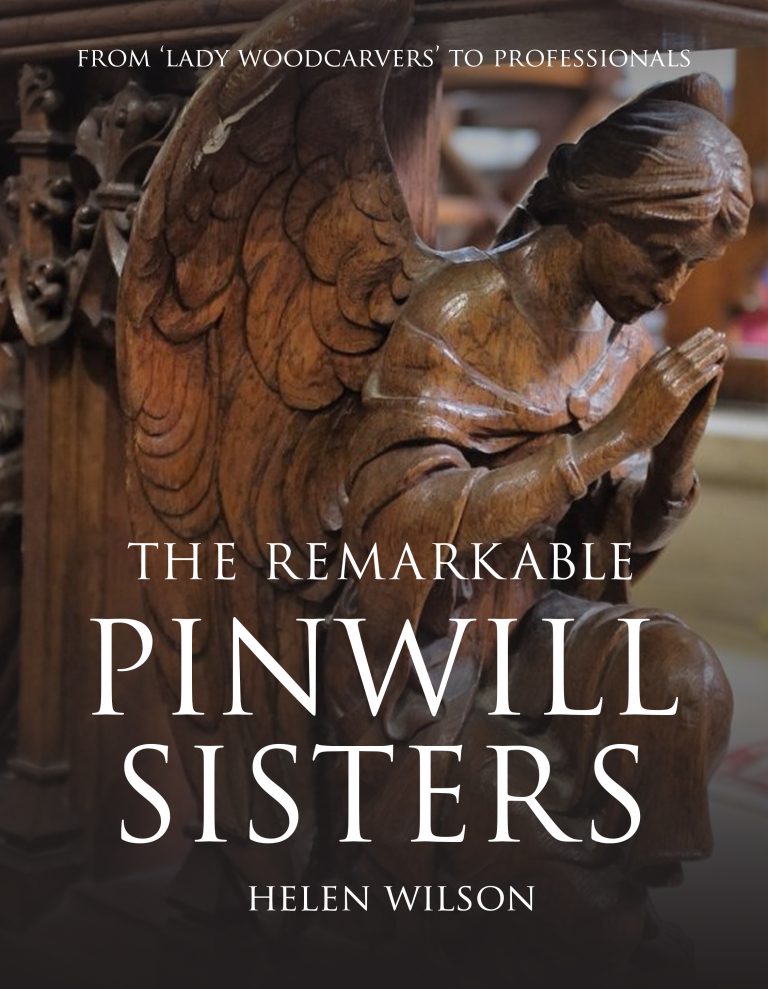 By Helen Wilson
By Helen Wilson
Further information can be found in the book The Remarkable Pinwill Sisters, available through the author’s website.
All photographs are by the author, apart from Fig. 3, for which she would like to thank Roy Reed for generously allowing the use of his image.

